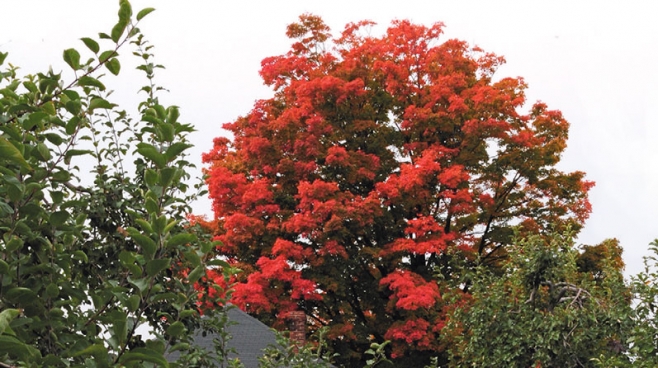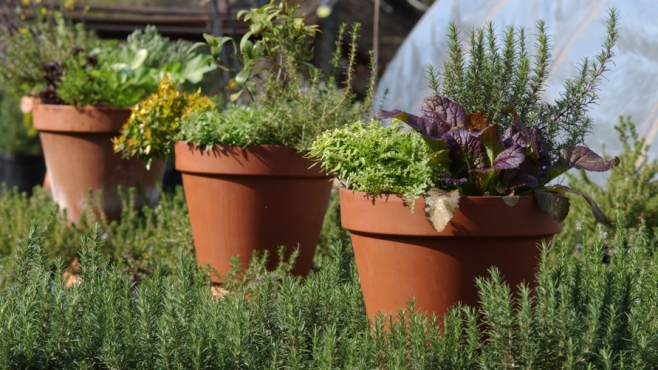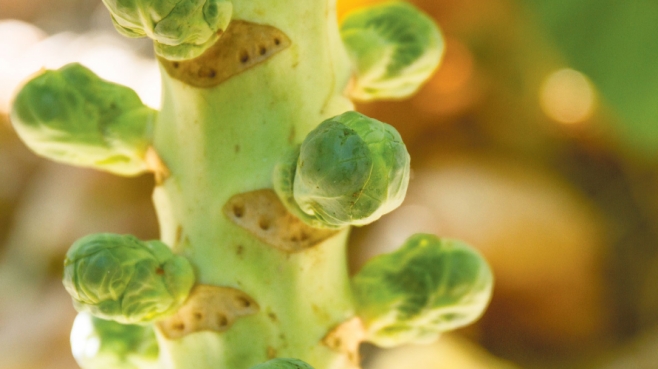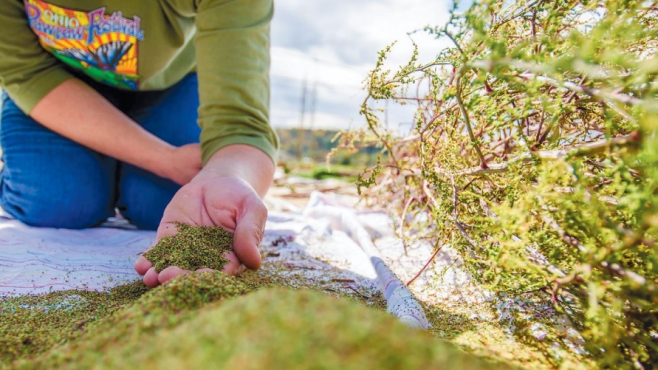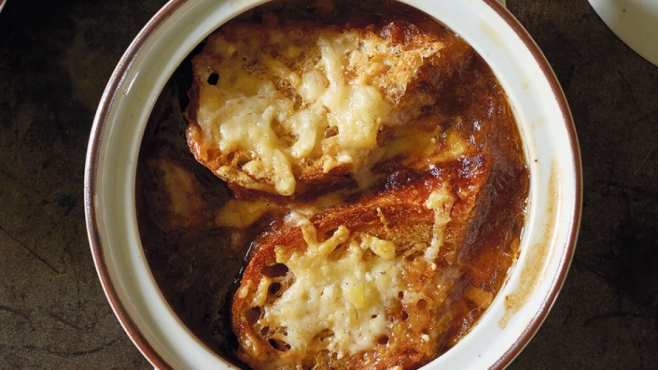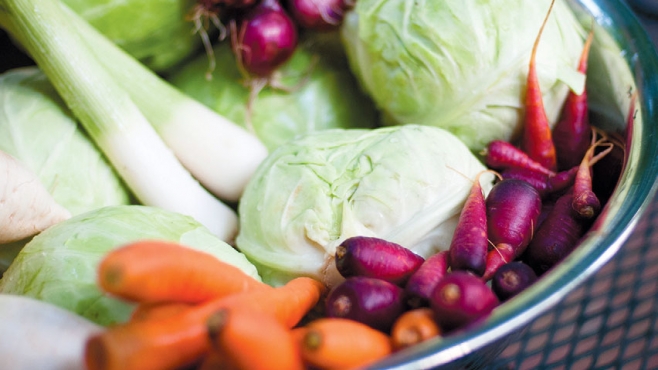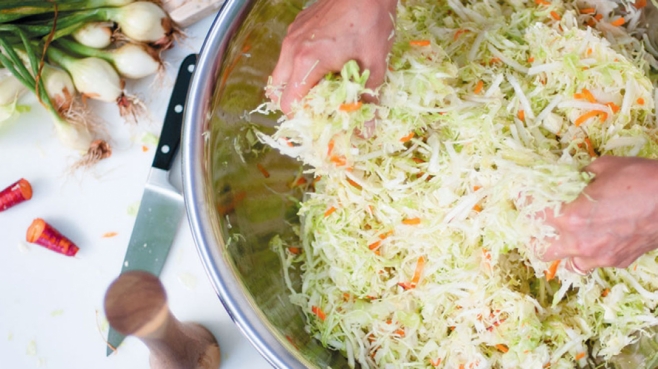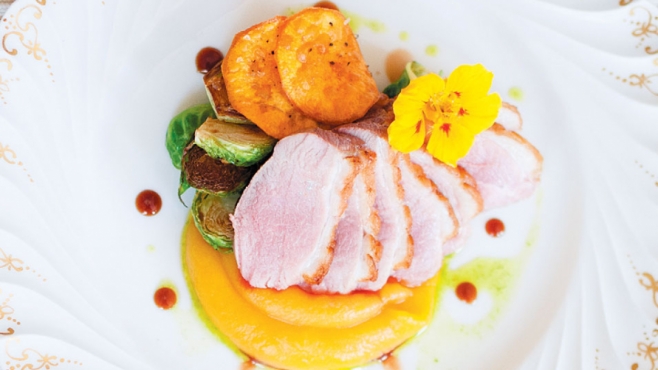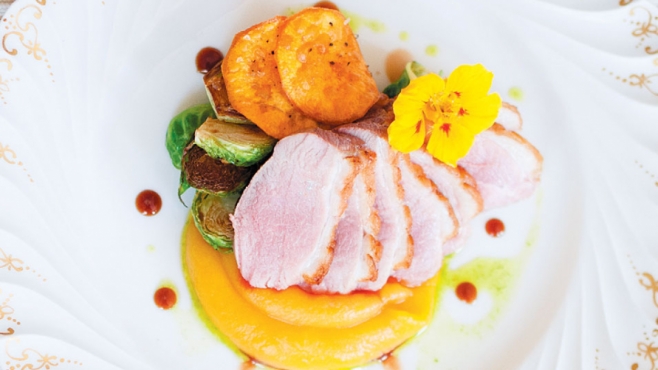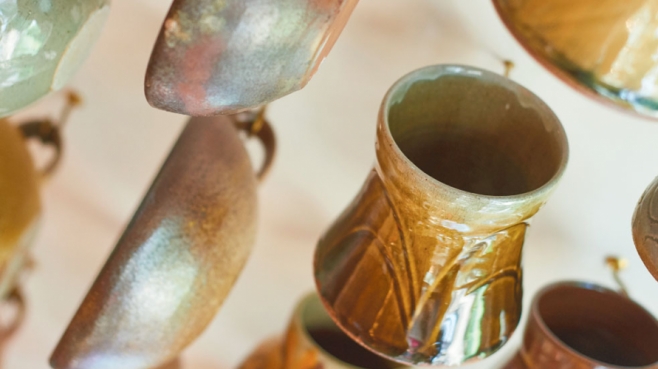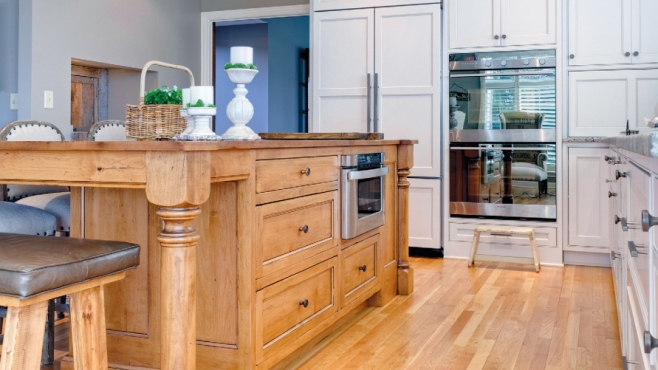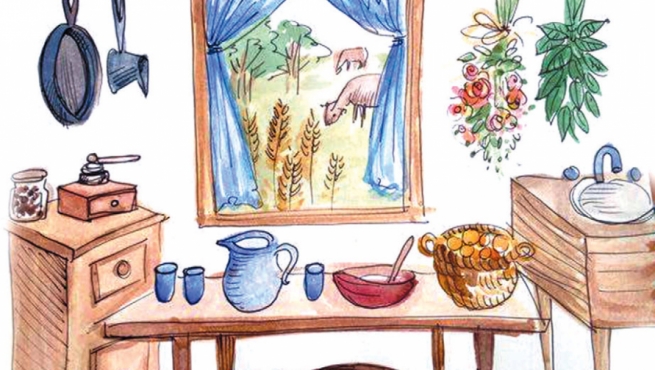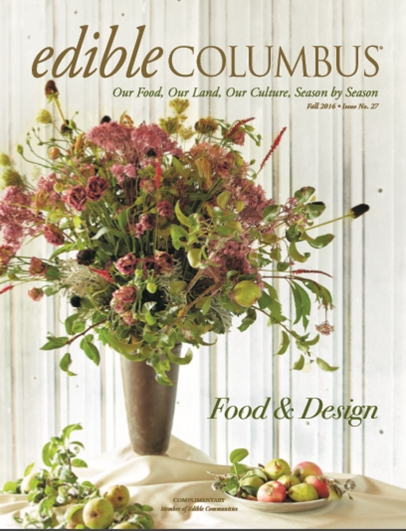
LETTER FROM THE PUBLISHER
The end of summer is always hard. At my house, we try to squeeze the last bit of fun from our days. Even though we talk about earlier bedtimes and better schedules—I always give in, making the beginning of school even harder and more tiring! I was reminded late this summer about the importance of making our days memorable and fun. A friend passed away, and his final message about midnight tea parties and the joyful spontaneity of going all out for those you love crosses my mind often. His example of a life well lived and surrounded by loving relationships is something I take to heart.
We all have limited time in a day to make count. One of the areas I have wanted to improve upon is how to be a better connector and to use what I have learned through producing Edible Columbus to improve our food system. We are in the unique position of learning from small- and large-scale farmers, chefs, artisans, institutions and consumers about needs, challenges and successes. We know there is a bridge to build between all of us to make our regional food system stronger and better connected. By doing this we hope more opportunities are created and our community benefits from meaningful connections.
Edible Columbus and Chef Bill Glover of Gallerie Bar & Bistro are hosting “Our Regional Food System,” a community think tank and luncheon to help bridge relationships in our regional food economy on October 27. Our hope is that we can gather ideas to create tools and make introductions that will lead to a stronger, more interconnected regional food system. If you are a buyer of food and want to source more locally, we hope you will come. If you are farmer and you want to sell more of your food to restaurants and institutional buyers, we hope you will join us. If you are a chef looking for the best locally grown ingredients and would like to learn more about sourcing local fruits, vegetables and meat, we value your input in this conversation. And if you are a consumer who cares about where your food comes from and has ideas to share, we invite you to the table. Details are on the next page.
This issue of Edible Columbus is focused on design and how good design can make us happier in our kitchen, excited about how our table is set, better able to plate our food and more thoughtful about the objects we surround ourselves with. So, if you are able to pull your loved ones together and surprise them for a midnight tea party, pull out the china, or your best pottery, and celebrate those you love.
Have a wonderful fall!
-Tricia Wheeler, Publisher
LETTER FROM THE EDITOR
My grandmother, Sarah, and I talk almost every night. We talk about the day—little things— and we laugh before saying goodnight. She tells me how some nights she wakes up worried about the state of the world. Her remedy? To sit with a cup of tea and read what she calls, “the edible book.” She’s referring to edible: A Celebration of Local Foods by Tracey Ryder and Carole Topalian, co-founders of the Edible Communities Publications. It’s a healthy collection of articles and recipes from all of the different edible magazines around the country. It reminds my grandmother of her life as it’s defined by foods and regions she once savored and called home. The recipe for Lobster Rolls reminds her of her time living in Maine and grilling lobster on beds of seaweed, and the article about a certain variety of apples piques her curiosity as she wonders if she’ll ever have a chance to taste it.
The stories of the foods and farms evoke memories of relationships in her life—relationships to the food, the land and the people she calls family, friends, sons and daughter. This soothes her rattled nerves and puts her to sleep. It’s failproof, she tells me.
Relationships. As the coming autumn chill stirs the leaves on the maple tree outside my window and the school bus returns to the neighborhood to gather children for school, I’m meditating on this concept called relationships. For it’s intrinsic to the world of sustainable food and farming, and it’s the bedrock of gratitude. As the poet David Whyte writes, “Gratitude is the understanding that many millions of things come together and live together and mesh together and breathe together in order for us to take even one more breath of air, that the underlying gift of life and incarnation as a living, participating human being is a privilege; that we are miraculously, part of something, rather than nothing.”
And autumn is the season for expressing our gratitude, isn’t it?
Relationship—it’s the mark of good design, too. Whether in a plate of home-cooked food or a nosegay picked fresh from the autumn woods for your bedside table, design is about how you place things in relationship to other things to establish purpose in your life—your aesthetic evocative of your relationships to those you call family, friends, farmer, husband and wife. This issue offers ways to re-imagine how you design aspects of your edible life—how you create and build relationships between things, people, experiences.
This issue also invites you to “Our Regional Food System,” a community think tank cocreated by us here at Edible Columbusand Chef Bill Glover at the Gallerie Bistro & Bar at The Hilton. When contributor Nicole Rasul and I sat down with Bill to share our idea to bring together people in Central Ohio from all across the food chain to reclaim the term “local foods” for what it really means to our community and build relationships between eaters and farmers, producers and distributors, we were humbled and inspired to find that Bill had been thinking along the very same lines. The collective unconscious is alive and well, and we encourage you to join us for lunch on October 27 for what is sure to be enlivening conversation and the beginnings of an evolution of Columbus’ local food community for 2017 [page 5].
We hope you enjoy reading about how to make sauerkraut at home [page 28], the rediscovery of an ancient grain in Athens known as the Chenopod [page 18], why craft pottery in our state is having a comeback [page 44], how a local fashion designer uses black eyed Susans and black walnuts for her couture dresses [page 38] and so many more vital and inspiring relationships between the pages of our fall issue.
-Colleen Leonardi, Editor






